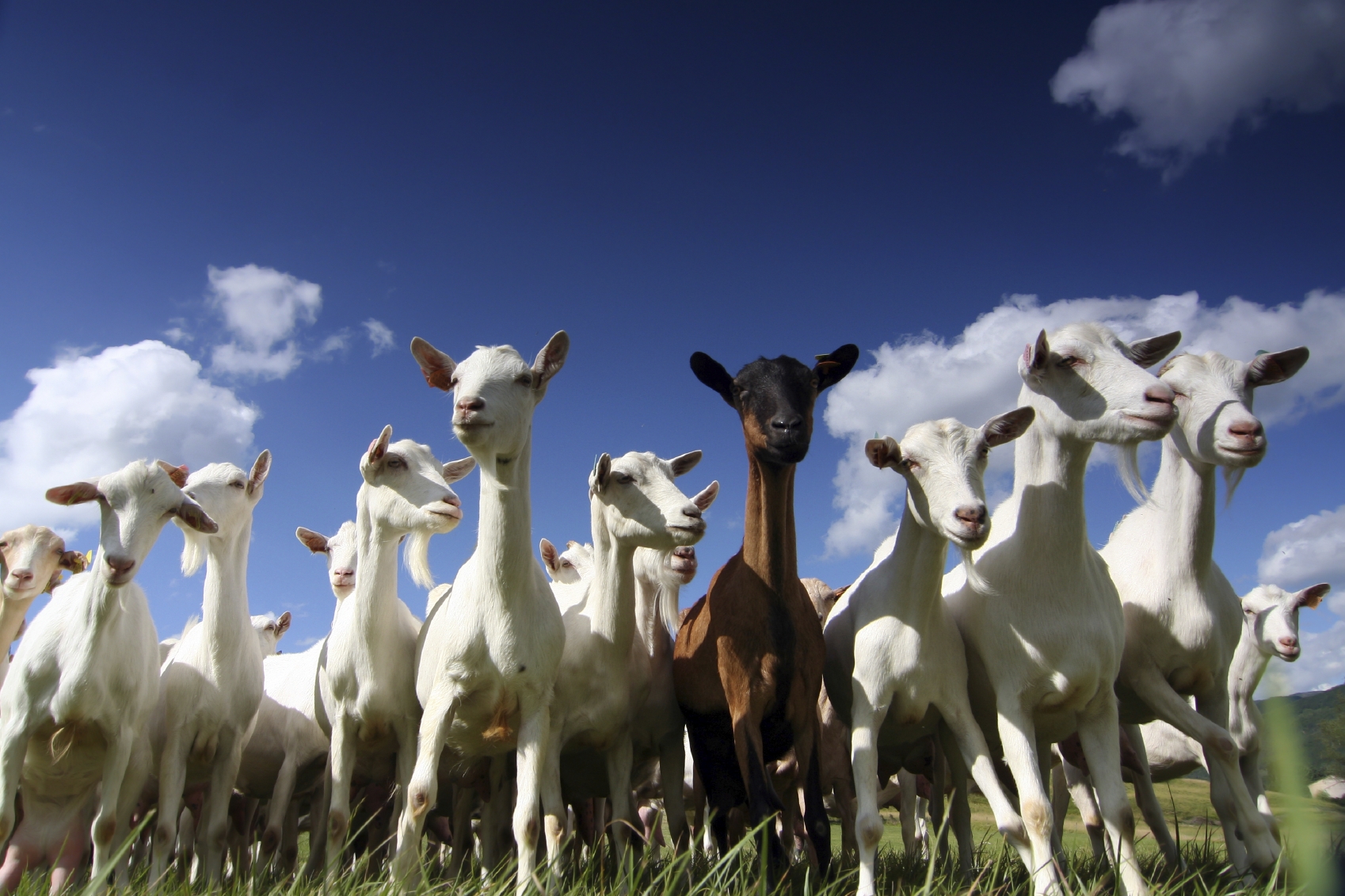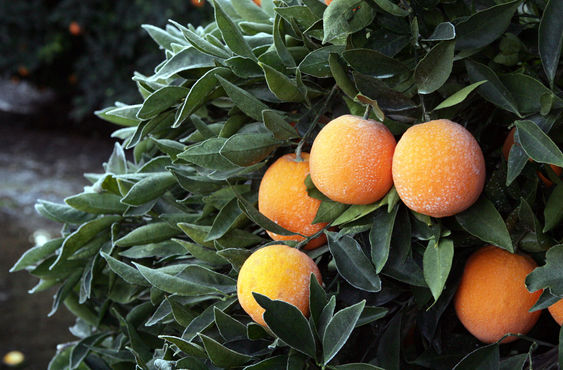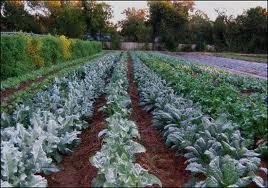-
Recent Posts
- California Milk and Dairy Products: Safety You Can Rely On, Thanks to CDFA
- Invasive Plant Pest and Disease Awareness Month — Japanese Beetle infestations a major threat
- Despite Tariffs, California Continues Trade Engagement
- Earth Week profile — Office of Agricultural Resilience and Sustainability (OARS) launches newsletter and blog to strengthen program visibility and collaboration
- Earth Week spotlight — CDFA Food Recovery webpage offers resources for reducing food waste
Recent Comments
- Opinion: Big Ag’s false solution: How factory-farm gas distracts from real climate action - stg.mercyforanimals.org on CDFA helps California dairy farmers generate renewable energy from waste — from UC Agriculture and Natural Resources via Morning Ag Clips
- DL Open Thread: Friday, January 24, 2025 : Delaware Liberal on Nine California Counties Make Top-10 List for Ag Sales in the U.S.
- Bert Sedgewick on Santa’s Reindeer Cleared for Visit to California
- Patrick A. Cavanaugh on Santa’s Reindeer Cleared for Visit to California
- Connie VanZant on Santa’s Reindeer Cleared for Visit to California
Archives
- April 2025
- March 2025
- February 2025
- January 2025
- December 2024
- November 2024
- October 2024
- September 2024
- August 2024
- July 2024
- June 2024
- May 2024
- April 2024
- March 2024
- February 2024
- January 2024
- December 2023
- November 2023
- October 2023
- September 2023
- August 2023
- July 2023
- June 2023
- May 2023
- April 2023
- March 2023
- February 2023
- January 2023
- December 2022
- November 2022
- October 2022
- September 2022
- August 2022
- July 2022
- June 2022
- May 2022
- April 2022
- March 2022
- February 2022
- January 2022
- December 2021
- November 2021
- October 2021
- September 2021
- August 2021
- July 2021
- June 2021
- May 2021
- April 2021
- March 2021
- February 2021
- January 2021
- December 2020
- November 2020
- October 2020
- September 2020
- August 2020
- July 2020
- June 2020
- May 2020
- April 2020
- March 2020
- February 2020
- January 2020
- December 2019
- November 2019
- October 2019
- September 2019
- August 2019
- July 2019
- June 2019
- May 2019
- April 2019
- March 2019
- February 2019
- January 2019
- December 2018
- November 2018
- October 2018
- September 2018
- August 2018
- July 2018
- June 2018
- May 2018
- April 2018
- March 2018
- February 2018
- January 2018
- December 2017
- November 2017
- October 2017
- September 2017
- August 2017
- July 2017
- June 2017
- May 2017
- April 2017
- March 2017
- February 2017
- January 2017
- December 2016
- November 2016
- October 2016
- September 2016
- August 2016
- July 2016
- June 2016
- May 2016
- April 2016
- March 2016
- February 2016
- January 2016
- December 2015
- November 2015
- October 2015
- September 2015
- August 2015
- July 2015
- June 2015
- May 2015
- April 2015
- March 2015
- February 2015
- January 2015
- December 2014
- November 2014
- October 2014
- September 2014
- August 2014
- July 2014
- June 2014
- May 2014
- April 2014
- March 2014
- February 2014
- January 2014
- December 2013
- November 2013
- October 2013
- September 2013
- August 2013
- July 2013
- June 2013
- May 2013
- April 2013
- March 2013
- February 2013
- January 2013
- December 2012
- November 2012
- October 2012
- September 2012
- August 2012
- July 2012
- June 2012
- May 2012
- April 2012
- March 2012
- February 2012
- January 2012
- December 2011
- November 2011
- October 2011
- September 2011
- August 2011
- July 2011
- June 2011
Categories
- AG Vision
- Agricultural Education
- Agricultural Marketing
- Alternative Fuels
- Animal health
- Animal Welfare
- Asian Citrus Psyllid
- Biodiversity
- Border stations
- BSE
- Cannabis
- Cannella Panel
- Climate Change
- Climate Smart Agriculture
- Community-based Food System
- Conservation
- Dairy
- Drought
- Environment
- Fairs
- Farm Bill
- Farm Labor
- Farmers' Markets
- Fertilizer
- Food Access
- Food Safety
- Food Waste
- Glassy-winged Sharpshooter
- Growing California
- Healthy soils
- HLB
- Hydrogen
- Integrated Pest Management (IPM)
- Invasive Species
- Light Brown Apple Moth
- Livestock ID
- Measurement Standards
- Nutrition
- Organic agriculture
- Pierce's Disease
- Pollinators
- Specialty Crops
- State Board of Food and Agriculture
- Succession Planning
- Trade
- Uncategorized
Pages
RSS

Ag Super Bowl commercial – California pistachios, cracking Gangnam Style
Posted in Uncategorized
4 Comments
Off to the Super Bowl for California pistachios
 Over the years, one of the keys to success for California commodities has been an ability to embrace the marketing tools of their time to reach consumers. There may be no better example of that than the Super Bowl. This year, California pistachios will be featured in a 30-second Super Bowl commercial scheduled to run during the third quarter of the game. The spot will feature South Korean pop star Psy (“Gangnam Style”) demonstrating how he eats pistachios. Here’s the story in the Bakersfield Californian.
Over the years, one of the keys to success for California commodities has been an ability to embrace the marketing tools of their time to reach consumers. There may be no better example of that than the Super Bowl. This year, California pistachios will be featured in a 30-second Super Bowl commercial scheduled to run during the third quarter of the game. The spot will feature South Korean pop star Psy (“Gangnam Style”) demonstrating how he eats pistachios. Here’s the story in the Bakersfield Californian.
—————————————————————————–
The Super Bowl is a tough nut to crack for most Kern County products. But this year, locally grown pistachios are getting in on the game.
Local ag giant Paramount Farms has produced a 30-second commercial scheduled to air during the third quarter of Sunday’s big game between the Baltimore Ravens and the San Francisco 49ers.
Although the commercial is still under wraps, media materials released Wednesday indicate that South Korean music and dance sensation Psy of “Gangnam Style” fame will demonstrate how he eats pistachios.
The ad is the latest installment of Paramount’s “Get Crackin'” ad campaign. Earlier installments of the series have featured A-list celebrities including boxer Manny Pacquiao, cartoon character Homer Simpson and rapper Snoop Dogg.
Local farming officials couldn’t be happier with the exposure.
“That’s awesome!” exclaimed Beth Pandol, co-chairwoman of the Kern County Nut Festival, the June 14-15 event of which Paramount has signed up to be a top sponsor.
She said this may be the first time the Super Bowl will feature a Kern County product. (A Paramount spokeswoman said she thought the same but could not confirm it.) At any rate, it’s the work of a savvy organization, Pandol said, adding “Paramount’s smart in their marketing.”
The executive director of the Kern County Farm Bureau, Ben McFarland was no less enthusiastic.”
“I think it’s awesome,” he wrote in an email Wednesday. “This kind of recognition is a testament to the planning and hard work of Kern County pistachio growers, Paramount Farms and the quality of their product.
“California produces 98 percent of the nation’s pistachio crop, and Kern is the state’s top producing county. In an indirect way, it puts Kern County nut tree farming on the world map for quality in healthy snacking.”
The Wonderful Pistachios spot is no small investment for Paramount’s parent company, Los Angeles-based Roll Global LLC, which also owns the Pom Wonderful line and co-owns the Cuties brand of mandarins.
Ad Age reported Wednesday that the average cost of a commercial in this year’s Super Bowl is between $3.7 million and $3.8 million. Its story noted that, in addition to Psy, this year’s commercial-time talent is to include comedian Amy Poehler, actor Dwayne “The Rock” Johnson and Kaley Cuoco, an actress on the sitcom “The Big Bang Theory.”
Clad in a pistachio-green tuxedo for his U.S. television commercial debut, Psy fits nicely with the Paramount brand, the company’s vice president of marketing, Marc Seguin, said in a news release.
“It’s a powerhouse combination,” he stated. “The Super Bowl is the most widely watched sporting event of the year, ‘Gangnam Style’ is the most watched YouTube video and Wonderful Pistachios is the top-selling snack nut item on the market.”
Psy added in the release, “The Wonderful Pistachios brand is fun, just like me.”
“Also, I love pistachios and I look good in green.”
Posted in Uncategorized
Leave a comment
Census of Agriculture, Microloan Program Excellent Examples of the Value of USDA’s Partnership With California
Two recent announcements by the USDA remind us all of the agency’s value as a federal partner in food and agricultural production. The USDA assists Californians in a variety of ways, from producer insurance programs to school nutrition and food security for needy families.
One announcement was a reminder that February 4 is the deadline to respond to the 2012 Census of Agriculture, which the USDA conducts every five years to provide detailed data covering nearly every facet of U.S. agriculture. Decision makers at the local and national levels use the data to make decisions that directly impact farmers, their operations and their communities. The Census matters. I urge all California producers to follow through with this if they haven’t already done so.
The other announcement was tailored to new farmers and ranchers, a program called Microloan to help with credit needs of $35,000 or less. The USDA believes the loans could be helpful for start-up operations selling at farmers’ markets or through community supported-agriculture (CSAs). Programs like this are essential as the USDA and Secretary Tom Vilsack work to facilitate the introduction of 100,000 new farmers and ranchers nationwide over the next several years.
Both of these programs will help California build a foundation of sustainability to meet the ever-increasing food demands of the future, and we are grateful to the USDA for its far-sightedness in making them possible.
Posted in Uncategorized
Leave a comment
“Goat Day” an excellent outreach opportunity for dairy foods program
 This Saturday, January 19, UC Davis will host its annual “Goat Day,” an opportunity for goat owners, veterinarians and students to learn about a variety of goat health and management topics. There will be updates on current goat research and other issues important to dairy, meat, fiber and companion-goat owners.
This Saturday, January 19, UC Davis will host its annual “Goat Day,” an opportunity for goat owners, veterinarians and students to learn about a variety of goat health and management topics. There will be updates on current goat research and other issues important to dairy, meat, fiber and companion-goat owners.
For CDFA, it’s an important opportunity to reach out to a growth sector of producers. More and more people are raising goats in California, and there seems to be increasing demand for artisan-style goat milk cheese – and perhaps a shortage of goat milk necessary to produce that cheese. We want to make sure producers are up to speed on milking-goat food safety issues and current laws that apply to those providing milk and dairy products to others, especially through commercial transactions. Those laws are the same as apply to other milk and dairy food producers in California.
Dr. Stephen Beam, chief of CDFA’s Milk and Dairy Food Safety Branch, will attend Goat Day to provide an overview on legal requirements and will be available to answer any questions goat owners may have.
This is an area of food production that reinforces the growing diversity of farming and ranching in California. We are pleased to be a part of it and will facilitate goat owners however possible.
Here comes Bacon Fest – proceeds to the Center for Land-Based Learning
 The second annual Bacon Fest Sacramento is scheduled for January 20-27, 2013. The events will include a chef’s competition, bacon specials at a number of Sacramento restaurants, a Kevin Bacon tribute night, and a coloring contest – the prizes are bacon donuts. Proceeds will go to the American River College culinary program and the Center For Land Based Learning in Winters. The founder of the Center for Land-Based Learning is California State Board of Food and Agriculture President Craig McNamara.
The second annual Bacon Fest Sacramento is scheduled for January 20-27, 2013. The events will include a chef’s competition, bacon specials at a number of Sacramento restaurants, a Kevin Bacon tribute night, and a coloring contest – the prizes are bacon donuts. Proceeds will go to the American River College culinary program and the Center For Land Based Learning in Winters. The founder of the Center for Land-Based Learning is California State Board of Food and Agriculture President Craig McNamara.
Posted in Uncategorized
Leave a comment
After the Freeze – CDFA Works to Assess Crop Damage
 Following a period of below-freezing temperatures in the Central Valley and other parts of California, CDFA’s Division of Inspection Services is working with growers and county agricultural commissioners to assess potential freeze damage to citrus fruit and avocados. There is also concern about other crops grown this time of year, such as lettuce and artichokes.
Following a period of below-freezing temperatures in the Central Valley and other parts of California, CDFA’s Division of Inspection Services is working with growers and county agricultural commissioners to assess potential freeze damage to citrus fruit and avocados. There is also concern about other crops grown this time of year, such as lettuce and artichokes.
Crop samples will be obtained from these regions and, because freeze damage typically takes 72 hours to show itself in citrus and up-to five days in avocados, those commodities will be held for a period of time before cutting occurs to determine if there is damage.
While freezing temperatures are always a concern, many growers take steps to protect their crops. In many cases, We know that protected citrus can sustain temperatures well below freezing for several hours.
With citrus, mandarins and lemons are generally more susceptible to damage caused by freezing temperatures, due to multiple factors. If freeze damage is detected in any crops, CDFA will work to make sure the information is provided to emergency officials, and that affected fruit is kept out of the marketplace.
This is a system that has been in place for many years in California. In collaboration with its partners, CDFA will work to develop information as quickly as possible and then facilitate whatever action steps are required.
Enrollment growing in US college and university Ag programs
Enrollment in US college and university agriculture programs is up 21 percent since 2006, according to data from the Food and Agriculture Education Information System, a partnership between the USDA, Virginia Tech University and over 200 colleges and departments of agriculture, natural resources and human sciences.
The data show more than 146,000 undergraduates in Ag programs. This growing interest is critical for the future of food production, as world population growth is creating a greater demand for food, and the average age of farmers in California is near 60.
The Fox News Channel recently reported on the trend and profiled UC Davis.
Posted in Uncategorized
1 Comment
Aligning With New Proposed Federal Produce Safety Rules
 Last Friday, January 4th, two years to the day after the Food Safety Modernization Act (FSMA) was signed into law by President Obama, the Food and Drug Administration (FDA) issued new proposed produce rules. The produce rules will go a long way toward establishing a common set of food safety practices in the production, harvesting and marketing of fresh produce.
Last Friday, January 4th, two years to the day after the Food Safety Modernization Act (FSMA) was signed into law by President Obama, the Food and Drug Administration (FDA) issued new proposed produce rules. The produce rules will go a long way toward establishing a common set of food safety practices in the production, harvesting and marketing of fresh produce.
Six years ago, the leafy greens industry, working with the State of California, established the California Leafy Greens Marketing Agreement. Since then, we have been operating under a system where food is produced with mandatory government oversight to provide a safe product for consumers. Like the new produce rules, the LGMA program is based on sound science and on risk assessment. I believe that the LGMA program meets and/or exceeds the requirements of the new rules. However, if adjustments are necessary, our program and systems will be quickly amended to meet any new FSMA requirements.
California’s leafy greens industry is not the only one to adopt this government partnership model for food safety. In California, tomato and cantaloupe producers have also implemented programs that require government inspectors to audit farms and packing facilities to ensure compliance with science-based food safety practices. Producers of Florida tomatoes and Arizona leafy greens have implemented similar programs. Leafy greens and tomato producers began these mandatory programs about five years ago. The California cantaloupe program was launched in 2012.
We have worked diligently with the FDA to inform them about the benefits of the public/private model as they develop FSMA regulations for produce farms. And we will continue to work closely with the agency to show how the LGMA already provides a mechanism to immediately verify that food safety standards on California leafy greens farms exceeds or complies with this law.
We welcome the advent of these new federal laws, and look forward to sharing our experience and our food safety model as we move forward.

